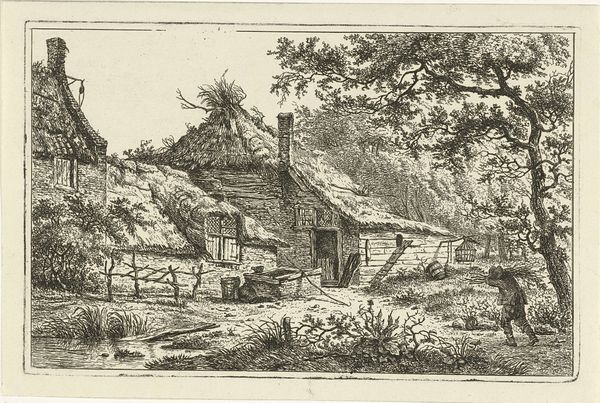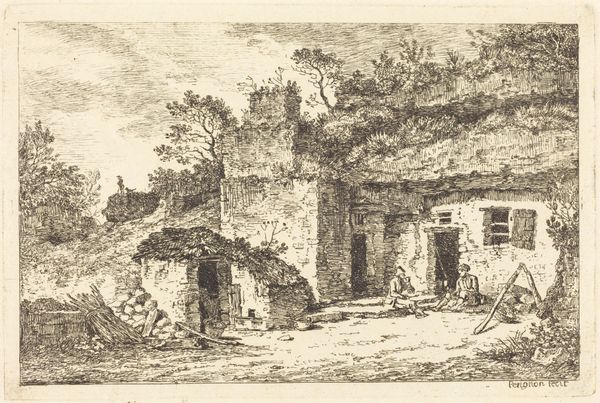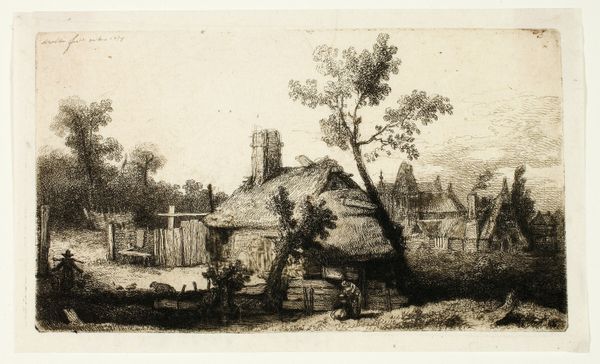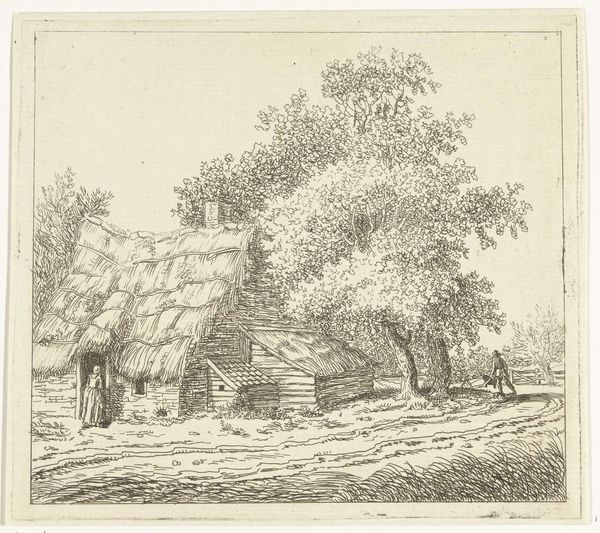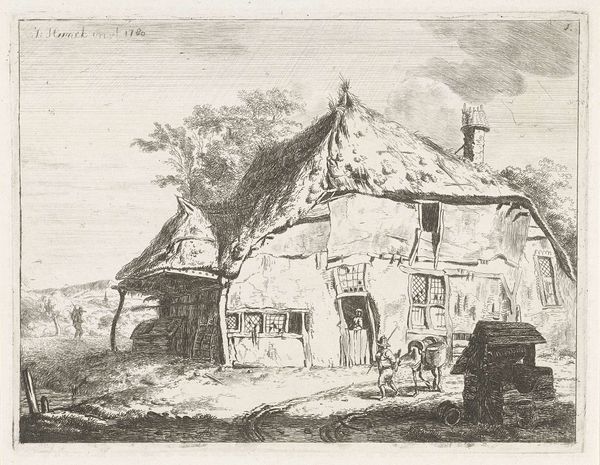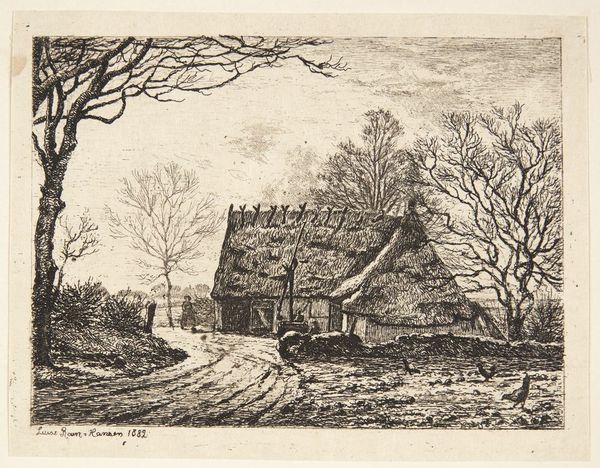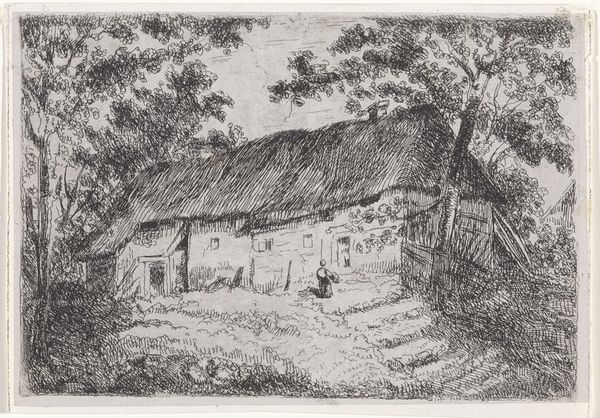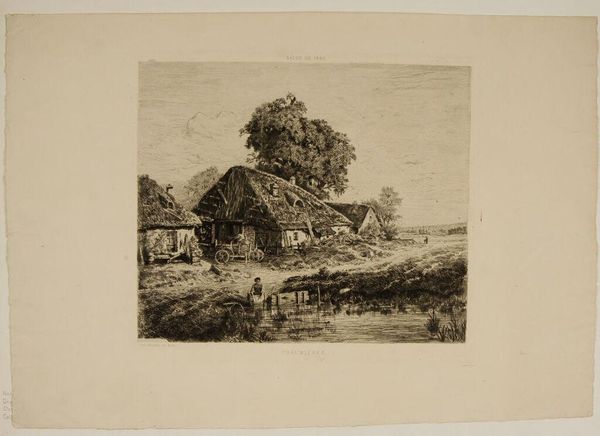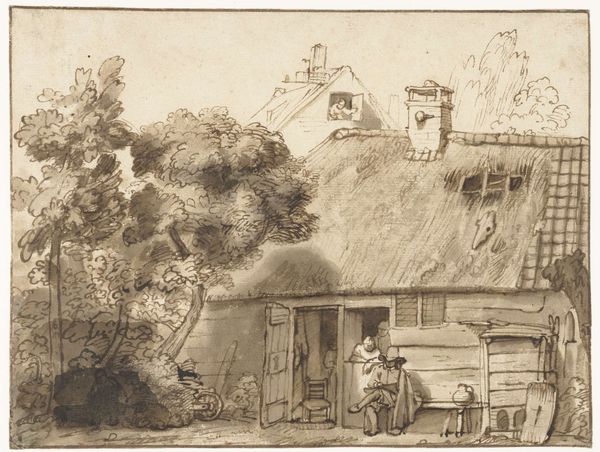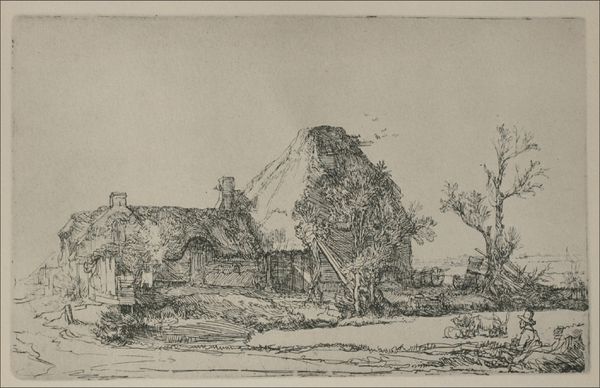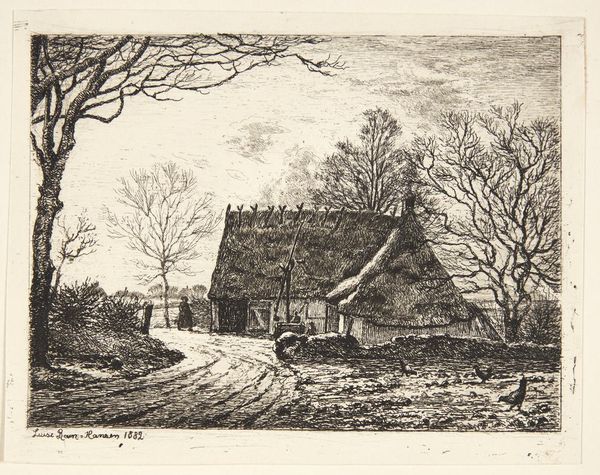
#
pen drawing
#
mechanical pen drawing
# print
#
pen illustration
#
pen sketch
#
old engraving style
#
personal sketchbook
#
ink drawing experimentation
#
pen-ink sketch
#
pen work
#
pencil art
Dimensions: image: 20.96 × 30 cm (8 1/4 × 11 13/16 in.) plate: 22.23 × 30 cm (8 3/4 × 11 13/16 in.) sheet: 29.37 × 44.61 cm (11 9/16 × 17 9/16 in.)
Copyright: National Gallery of Art: CC0 1.0
Editor: So, this is Edward Bouverie Hoyton's "Axmouth Smithy," from the early 20th century, a print, a pen drawing. It has this incredibly detailed, almost dreamlike quality, focused on the structure and texture of the building, but also how labor and nature intertwine. What stands out to you about it? Curator: For me, it’s the relationship between labor and landscape articulated through material representation. Look at the dense hatching used to depict the thatch roof and compare it to the gnarled form of the tree. Can you feel the physical act of the artist mimicking the processes and tools required of smithing in this mark-making? Editor: I think so, the penstrokes mimic the repetitive nature of the work! There's such emphasis on the texture, particularly the weathered stone of the Smithy itself, the wear of daily work embedded in those details. Curator: Exactly! And consider the social context: what was the function of this space, how has the means of representing manual labor and craft changed in relation to industrialization? What relationship does it reflect between artisan craft and mass production? Editor: Good questions. It feels almost romanticized now, looking back, perhaps with some nostalgic longing for a pre-industrial craft-based lifestyle? Like, look at the wagon wheels outside. Curator: Nostalgia certainly plays a role, but it’s the depiction of process and material—the layering of ink to create the illusion of depth and the textural elements, like the thatching that give the structure itself this lived-in sense, that is significant. Notice how this creates an almost palpable sense of historical presence? It allows us to connect with this historical context. Editor: That makes me look at the thatched roof in a whole new light – not just as an aesthetic element, but evidence of material culture! Curator: Precisely. Through his chosen materials and intricate detailing, Hoyton presents a particular view on how we might remember labor, not just as a task, but as intrinsic to forming spaces and experiences. Editor: I see. Thinking about materiality and context, it completely changes the way I understand the image. Curator: Yes, examining how it was made and the society surrounding it really shapes our perception.
Comments
No comments
Be the first to comment and join the conversation on the ultimate creative platform.

